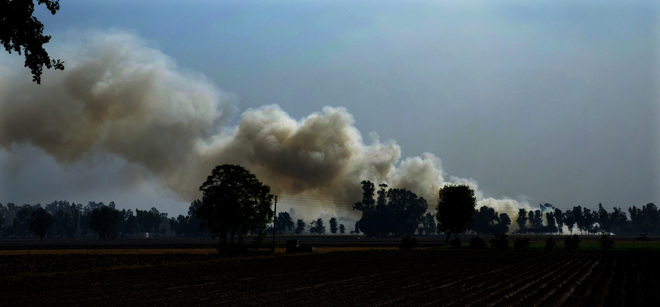
Chandigarh, November 2 :
The Air Quality Index (AQI) of Punjab fares a lot better than that of neighbouring Haryana and Delhi and it would not serve the ends of justice to pin the entire blame on Punjab because the facts on ground have a drastically different story to tell.Disclosing this here today, an official spokesperson divulged that in recent times, the pollution in Delhi, especially in the months of October through December has been increasingly blamed on the fires put to the paddy residues in the fields of North Indian states, specifically Punjab. Hence, it would only be prudent to present the factual situation.
Pointing out further, the spokesperson said that there are 6 Continuous Ambient Air Quality Monitoring Stations (CAAQMS) installed in Punjab, one each at Amritsar, Ludhiana, Jalandhar, Khanna, Mandi Gobindgarh & Patiala and comparison of data (on average basis) of these 6 CAAQMS stations with stations installed at Haryana cities near Delhi (Gurugram, Panipat, Sonipat, Faridabad, Rohtak) and Delhi stations reveals that in months of August and September (2018-2020), the average AQI of Punjab remained within 50 to 87. Whereas in Delhi, the average AQI during the same period remained from 63 to 118. In Haryana stations near Delhi (2019-2020) and Faridabad for the same period in 2020, the Average AQI ranged from 67 to 115. Therefore, Delhi’s average AQI was about 26 -36 % higher than the Punjab AQI, and that of Haryana 32 – 34 % higher than Punjab, before the onset of paddy harvesting season in October.
Divulging more, the spokesperson averred that with the start of harvesting and stubble burning season in the month of October (2018-2020), AQI in the Cities of Punjab ranges from 116 to 153. At the same time, locations in Haryana near Delhi (2019-2020) and Faridabad (2020) for the same period, the Average AQI ranges from 203 to 245 and the AQI of Delhi during this period ranges from 234 to 269. The increase in the AQI of the Punjab cities was observed to be 76%, whereas, the increase in the AQI of Haryana cities and Delhi stations was observed to be 107% and 134%. Also, the average AQI of Haryana was 80-90% higher than Punjab during the same period, whereas Delhi was more than 100% higher than that of Punjab.
Providing more details, the spokesperson said that the higher percentage of increase in AQI in Haryana cities and Delhi stations shows that the AQI of Haryana and Delhi is impacted by the local sources as well as stubble burning in the NCR region. These local sources may consists of emission load from transport, industries, power plants, residential, road dust, construction, D.G. sets, agriculture burning, crematoria, restaurants, airport, waste incinerator, municipal land fill fires etc. This can also be collaborated from the fact that the AQI in Punjab is largely due to higher value of PM2.5 (suspended particulates smaller than 2.5 μm in aerodynamic diameter) whereas in Delhi AQI is usually due to higher value of PM10(suspended particulates smaller than 10 μm in aerodynamic diameter). It needs to be noted that it has been scientifically established that PM2.5 can travel for hundreds of kilometres while the PM10 usually travels for very short distances, revealed the spokesperson.
The spokesperson further said that the local air quality of Punjab does get impacted due to the harvesting of crops and activity in the open fields leading to increase of Suspended Particulate Matter. However, the State Government is taking all necessary steps in this direction. While the long-term strategy of diversification has been taking roots on Punjab with diversification of 7 lac hectares of area from non-basmati paddy to other alternative crops such as cotton, maize and basmati in 2019-20 and 2020-21, the Punjab Government has also been providing equipment’s like Super SMS, Happy Seeder, Super Seeder, Zero Till Drill, Rotavator, Chopper, Mulcher etc. to the Individual Farmers & to the Custom Hiring Centers for in-situ management of paddy straw. Besides, the Strict enforcement has also resulted in reduction of 5.26% area under stubble burning this year as compared to last year.
-NAV GILL



